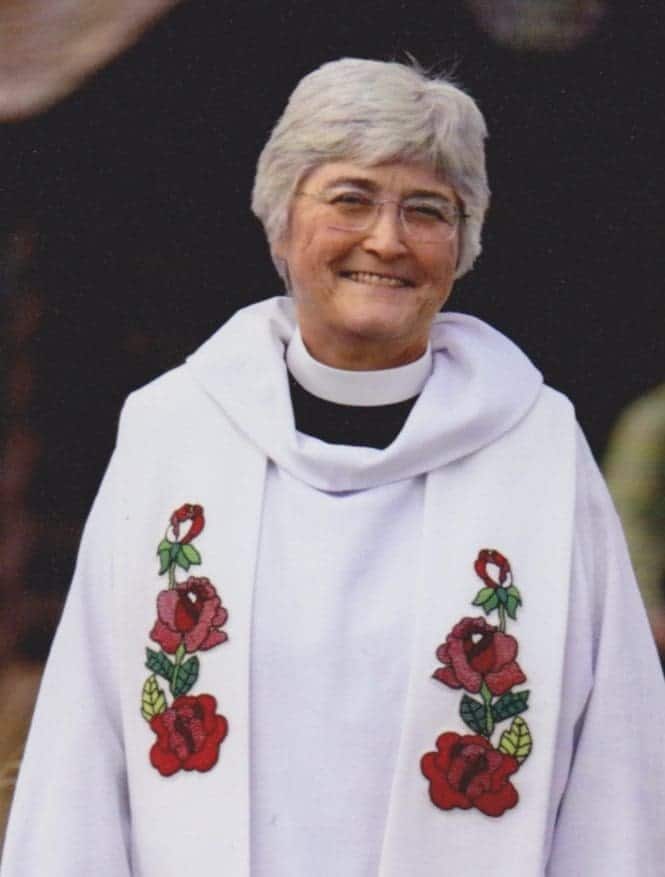Originally published by the late Rev. Ann Fontaine — a tireless advocate for the oppressed and a fierce friend.
Andrew Sullivan, writing on The Atlantic’s Web site , has been praising the Episcopal Church for its actions on priests who commit sexual abuse, exploitation and harassment. In the comments on his column stories of quick action following the reporting of abuse have appeared. It is good to hear that our system is working for some people who have suffered at the hands of priests and bishops. I wish it had always been the case but we have our own history of the abuse of power, secrecy, and denial. It was not until the ’70s and ’80s that these abuses were finally addressed by the Church and the General Convention began work on revising the canons and to encourage dioceses to provide procedures and training.
Women clergy began to hear the stories of child and youth sexual abuse by clergy in the late 70s and early 80s. Women had only been ordained since 1974. A few women across the denominations met to compare notes. In the meantime lawsuits were beginning to emerge when the church would not respond to the suffering. The insurance companies were getting worried about providing liability insurance when churches knew about abuse and passed a priest on to another place. While I was serving on the Executive Council from 1985-91, Ellen Cooke, Treasurer, reported to the Presiding Bishop and the Council that something needed to be done both for pastoral and fiduciary reasons.
General Convention began to act. In 1985, a resolution passed to request Dioceses to conduct workshops on recognizing child sexual abuse. In 1991, a Committee on Sexual Exploitation was established. During this period several women clergy and some attorneys who had been providing legal counsel for abuse victims/survivors developed training for Bishops and other leaders to teach the church about the issue and how to deal with perpetrators and victims/survivors. It was clear that TEC did not have canons or procedures to guide this work, so several of us proposed a resolution for the next General Convention.
The bishops did not think the time was right for this action but we pressed ahead. The women of the Episcopal Church – Episcopal Women’s Caucus, Episcopal Church Women, Daughters of the King, and others mobilized to lobby both Houses and to talk their bishops about the importance of immediate action by the church. Abuse victims/survivors came to testify, often the first time they had told their stories in public. 1997 saw a number of resolutions including the revision of Title IV (disciplinary canons) passed. (The history of resolutions is here.) The Bishop’s Pastoral Office led by the Rt. Rev. Harold (Hoppy) Hopkins was a key supporter of funding, education, developing training and facing the issues of abuses and exploitation.
In 2009 another revision of the Title IV canons was passed to set up a procedure that is more like the professional standards of conduct in other professions. The original revisions were based on the Military Code of Justice that while providing a way to deal with abuse and exploitation have proved very difficult to use.
Since the days of these early cases the work to stop abuse in the Episcopal Church has a mixed record. In my work as a member of committees proposing and acting on guidelines for action and as a advocate for those who have suffered abuse and exploitation, I see the Episcopal Church is currently doing much better work but with areas that are still lacking.
Stopping child sexual abuse has the greatest success. Safeguarding God’s Children training is required of all clergy and all lay leaders especially anyone in the church working with children and youth. Congregations and parents are more aware of how to spot abuse and who to contact if it occurs. Church schools are vigilant about contact with children, requiring 2 adults present, windows in all offices, locking spaces where abuse might occur, and doing background checks on all employees and volunteers. Many dioceses are using online self-guided training and awareness programs which have increased participation 10 to 100 fold over the face to face training. We know that perpetrators will not stop abuse from taking place but the community can become vigilant and prevent incidents. Compliance is left to the dioceses to enforce but most have strict guidelines.
Exploitation of vulnerable adults and harassment has a more mixed success rate. Much depends on the local diocese and requirements for response and discipline. Although the canons are in place, it is often a hard road to get the canons enforced. Rather than viewing events as abuse of power, they are confused with “affairs” or the victim is blamed for the occurrence. Egregious, multiple offenses are usually dealt with eventually but justice is slow to be found for these abuses. Most professions realize that the person in power has the responsibility in any relationship – regardless of actions. The church is beginning to understand this. The discipline of bishops is the least successful area in the church.
The new revisions of the canons hold out the possibility that the procedures will be more available and easier to use with offending priests and deacons in dioceses. The canons have more options before taking the case to court. Child abuse, of course, must be reported to the police or county authorities by civil law. Training in adult exploitation and harassment is now available for congregations and dioceses. The Episcopal Church has learned that a church that faces abuse and exploitation promptly and with justice, restoration, and reconciliation can be a healthier safer place for all.


Leave a Reply